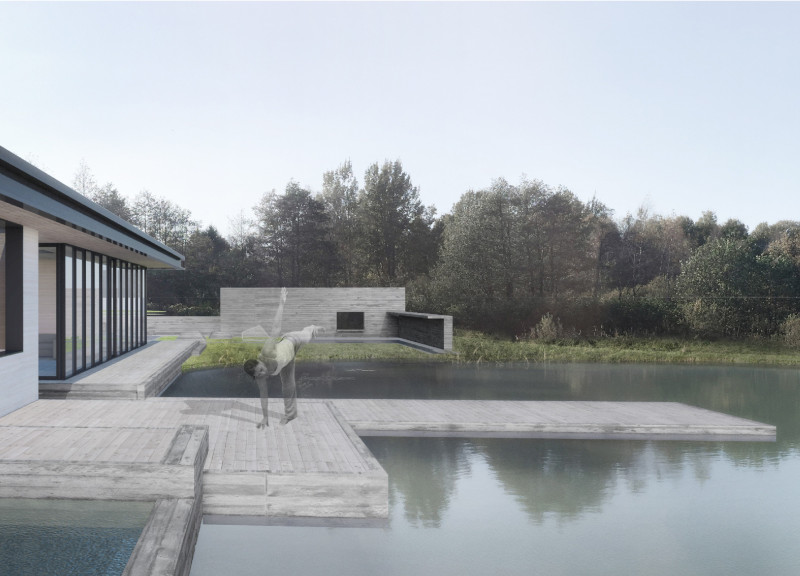5 key facts about this project
At its core, the Blue Clay Country Spa serves multiple functions, including a wellness retreat, a relaxation area, and a social hub. The architectural design strategically positions different facilities — such as treatment rooms, leisure zones, and outdoor pools — around a central Great House, creating a cohesive flow throughout the site. This layout reflects an understanding of human behavior, providing visitors with various environments tailored to individual preferences and activities.
Key elements of the project include the extensive use of natural materials, which not only enhance the aesthetic appeal but also promote sustainability. Wood is prominently featured in the framework and decking, offering warmth and an organic quality that resonates with the surrounding landscape. Large glass facades in the Great House serve to blur the boundaries between interior and exterior spaces, allowing natural light to permeate the building and providing expansive views of the lush surroundings. This design approach reflects a deep respect for the environment, as it minimizes disruption to the natural ecosystem while maximizing the user's sensory experience.
Beyond the materials, the architectural design addresses practical concerns such as stormwater management, incorporating features that naturally collect and manage rainwater. This pragmatic approach to design not only fulfills environmental responsibilities but also contributes to the aesthetic richness of the landscape. Integration with the topography is a notable aspect, demonstrating a willingness to adapt architectural solutions based on the existing site context rather than imposing a rigid framework.
Unique design ideas are evident in various aspects of the project, especially in how the layout encourages exploration. Pathways wind through the landscape, enhancing the experience of discovery as visitors navigate from one facility to another. The incorporation of water elements, such as reflection pools and children's pools, further emphasizes tranquility and relaxation while serving as focal points that draw visitors deeper into the spa experience.
Moreover, the overall design philosophy champions the idea of multi-functional spaces, seamlessly blending distinct areas dedicated to wellness, leisure, and social interaction. This thoughtful organization encourages community engagement while ensuring that there are enough private spaces for individual reflection and relaxation.
The Blue Clay Country Spa stands as a testament to contemporary architectural practices that prioritize sustainability, community, and wellness. It invites discussion on how modern architecture can effectively harmonize with nature while addressing human needs. For those interested in exploring architectural solutions that consider both function and aesthetic in secluded settings, this project offers insightful architectural plans and details illustrating the thoughtful design process.
For a deeper understanding of its architectural ideas and innovative design approaches, readers are encouraged to review the project presentation. This exploration will further uncover the intricate architectural sections and designs that define the Blue Clay Country Spa and contribute to its unique character within the Latvian landscape.


























